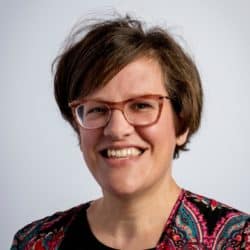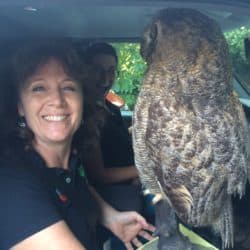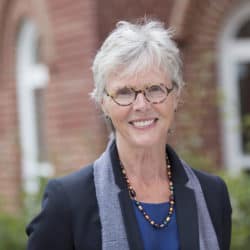As we mark the 150th anniversary of confederation, The Philanthropist is profiling Canadians from across the non-profit sector and putting a face to 150 individuals who work or volunteer in Canada’s social sector.
Name: Alyssa Lai
Profession (current role in the sector): Digital Marketing Coordinator, Hamilton Health Sciences Foundation
Years working and/or volunteering in the nonprofit sector: 5 years
Can you describe a defining moment in your career working/volunteering in the non-profit sector?
I was 23 years old when I got my first job in the sector. I landed a communications role in Immigrants Working Centre (IWC), a settlement organization that serves newcomers in Hamilton. To this day, the job has a special place in my heart, because I too am a newcomer. I came to Canada as an international student when I was 18 years old.
Aside from allowing me to hone my skills in communications, the job helped shape my thinking about power and privilege. My status as an international student puts me in a minority group within the larger student population and my Canadian-born peers at university. However, working at IWC challenged this bias. I learned that many of my IWC colleagues came to Canada as refugees fleeing war-torn countries. They built their lives in this country from scratch. When I placed myself within this context, I saw that I was in a position of privilege as a newcomer with a Canadian degree under her belt.
Through my first job, I learned to reassess my own power and privilege in a variety of contexts, to develop empathy and to think and care for others. As the saying goes, “when you’re accustomed to privilege, equality feels like oppression.” I vowed to never lose sight of this perspective, to check my privilege at all times, commit to learning, listening and take action when appropriate.
Describe your desk/workspace.
I have an eclectic mix of things at my desk such as: inspirational quotes (Points to Ponder), articles that are on point (40 Incorrectly Used Words That Can Make You Look Dumb) and a sprinkle of my Chinese heritage (red packet, Lunar New Year card, a very American fortune cookie). I’m also a Hamilton booster (hence my Hamilton button) and I’m always talking about the city, including its challenges and opportunities. As a proud McMaster University alumna, I have Mac the Marauder, the McMaster eagle mascot, pinned on my desk wall. I also have memorabilia (a coaster, a cup and a photo) from my former workplaces to remind me of how far I’ve come in my career and the people that have been a part of my journey.
What are you reading or following that has expanded your understanding of the non-profit sector?
Darren Walker, CEO of Ford Foundation, wrote an op-ed for the New York Times boldly titled, Why giving back isn’t enough. In his thought-provoking piece, he argued that philanthropy shouldn’t overlook the factors that contribute to inequity. “Giving back” isn’t sufficient when we don’t question the injustices that exist in our communities.
His article served as an “aha” moment for me in my thinking about philanthropy, because I’ve often seen philanthropy as more than a passive act of giving. Philanthropy isn’t just about “doing good,” it’s about creating a more just society.
I often reflect on millennials and philanthropy and how the act of giving has evolved over the years. Not many young people would call themselves philanthropists but many have donated, even in small amounts, to different causes and charities. Young people are also contributing their time and talents to important causes. I think young people are practicing hands-on philanthropy that is aligned with Walker’s belief that philanthropy should challenge systems that perpetuate inequity.
What matters to you that you feel we as a sector needing to be thinking about?
As part of the Ontario Nonprofit Network’s Connect the Sector fellowship, I will be writing about how nonprofits appeal to young people and advance and retain young nonprofit workers. The articles will have an internal and external focus on how the sector is creating–and sustaining–a pipeline of nonprofit leaders. By adopting an intergenerational lens, the goal of the articles is to encourage nonprofit organizations to think about systems and practices that would attract, retain and advance young people in the sector. In Hamilton, the number of millennials (those born between the early 1980s to the late 1990s) have already surpassed the boomers. This trend is goes beyond Hamilton, a city of over a half-million residents.
I hope the articles will spark reflection and action to create better entryways to the sector, and build stronger careers and leadership in the nonprofit sector. The time to act on this is now.
Do you know someone we should profile as part of this series? Email us at philanthropistprofiles@gmail.com


